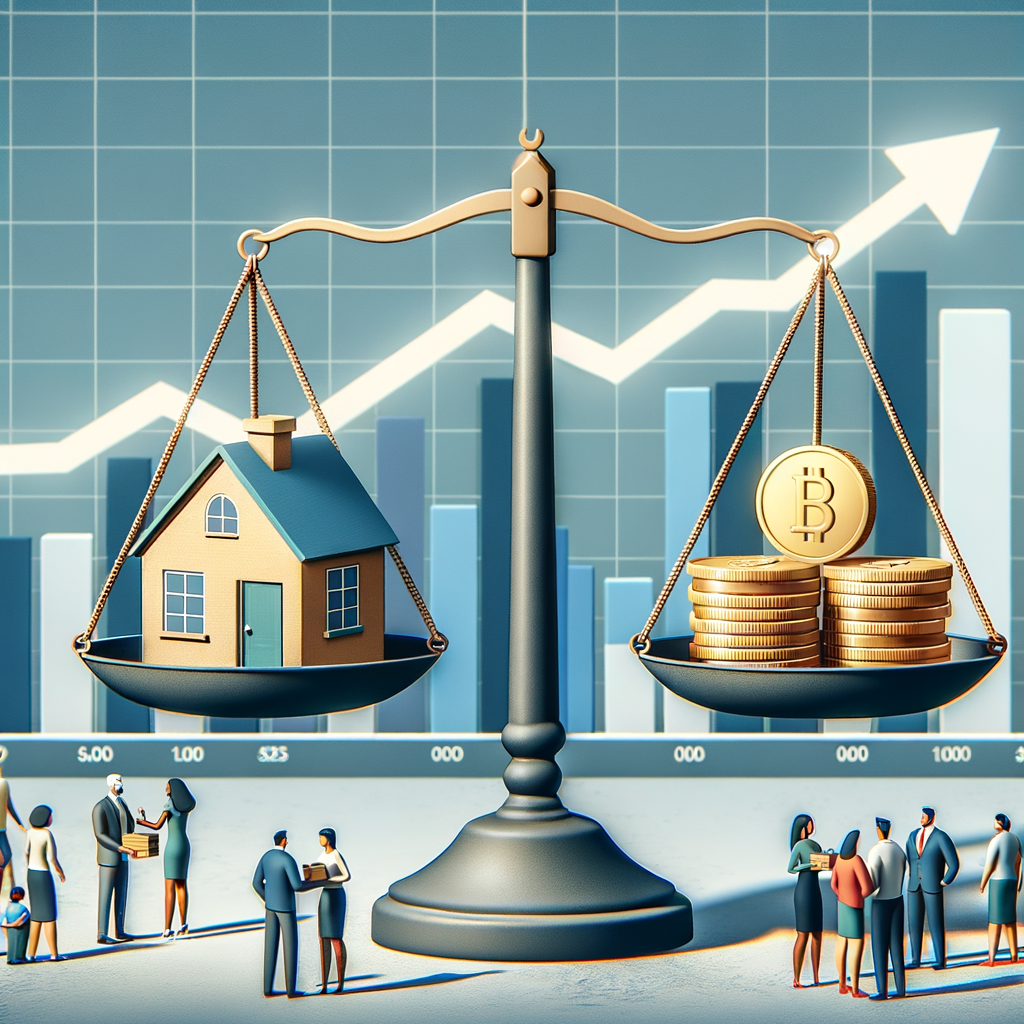Exploring the Surge in Homeownership: The Role of Low Mortgage Rates
The Impact of Low Mortgage Rates on the Housing Market
In recent years, the housing market has experienced a remarkable surge in homeownership, a trend that can be largely attributed to the historically low mortgage rates that have prevailed. These enticing rates have unlocked the doors to homeownership for many, offering a silver lining in an economy that has faced its fair share of challenges. As we explore the role of low mortgage rates, it becomes clear that their impact extends far beyond the individual homeowner, influencing the broader economy and shaping the landscape of communities across the nation.
Low mortgage rates have acted as a catalyst for potential buyers, turning the dream of owning a home into an attainable goal. For many, the lower monthly payments that come with reduced rates mean that mortgages are now more affordable than rent, a compelling incentive to make the leap into homeownership. This shift has not only empowered individuals and families to invest in their futures but has also stimulated the housing market, driving demand and, in many areas, leading to a competitive marketplace.
The ripple effects of this increased demand are multifaceted. On one hand, homebuilders and developers have ramped up construction to keep pace with the growing appetite for new homes, contributing to job creation and economic growth. On the other hand, existing homeowners have found themselves in a favorable position, often able to sell their properties at a premium due to the heightened competition among buyers. This has, in turn, provided many with the opportunity to upgrade to larger homes or to relocate to more desirable neighborhoods.
Moreover, low mortgage rates have opened the door to a more diverse group of homebuyers. Younger generations, who may have previously viewed homeownership as a distant prospect, are now entering the market with vigor. This influx of younger buyers is not only revitalizing neighborhoods but also ensuring a healthy turnover of property ownership, which is vital for the long-term sustainability of the housing market.
The benefits of low mortgage rates extend into the realm of refinancing as well. Homeowners who have taken advantage of these rates to refinance their existing mortgages have found themselves with extra cash in hand, thanks to lower monthly payments. This additional disposable income has often been redirected into home improvements, further education, or even into the economy at large through increased consumer spending.
However, it’s important to recognize that the impact of low mortgage rates isn’t universally positive. In some regions, the surge in demand has outpaced supply, leading to housing shortages and skyrocketing property values. This has raised concerns about affordability, particularly in urban centers where young professionals and families may find themselves priced out of the market. It’s a complex issue that policymakers and industry stakeholders continue to grapple with as they seek to balance the benefits of low mortgage rates with the need for accessible and affordable housing for all.
In conclusion, the role of low mortgage rates in the surge of homeownership is undeniable. They have provided a foundation for economic growth, community development, and personal financial stability. As we look to the future, it’s clear that these rates will continue to play a pivotal role in shaping the housing market. The optimism surrounding their impact is well-founded, but it is accompanied by a cautious awareness of the challenges that lie ahead. The hope is that with careful management and a commitment to equitable housing policies, the positive trends fueled by low mortgage rates will be sustained, ensuring a robust and inclusive housing market for years to come.
Low Mortgage Rates and Their Effect on Housing Demand and Prices
The Impact of Low Mortgage Rates on the Housing Market
In recent years, the housing market has experienced a significant boost, largely attributed to the sustained period of low mortgage rates. These attractive rates have unlocked a myriad of opportunities for potential homebuyers, fostering a sense of optimism in a sector that is a key driver of economic growth. As mortgage rates dip, the dream of homeownership becomes more attainable for a broader segment of the population, leading to a surge in housing demand and an inevitable rise in property prices.
Low mortgage rates serve as a powerful incentive for first-time buyers and those looking to upgrade their living spaces. The lower the interest on a mortgage, the less a homeowner will pay over the life of the loan, making it financially feasible for more people to borrow money to purchase a home. This increased accessibility has a ripple effect throughout the economy, as homeownership is often associated with increased spending on goods and services related to home improvement and maintenance.
The surge in demand driven by low mortgage rates does not only benefit buyers. Sellers find themselves in an advantageous position, as well. With more people able to afford mortgages, the pool of potential buyers grows, often resulting in bidding wars for available properties. This competition can drive up home prices, providing sellers with higher returns on their investments. The trend of rising home values instills confidence in homeowners and would-be sellers, reinforcing the positive sentiment in the market.
However, the impact of low mortgage rates extends beyond individual buyers and sellers. The construction industry often experiences a boom as builders respond to increased demand for new homes. This can lead to job creation and a surge in the purchase of construction materials, further stimulating the economy. Additionally, local governments benefit from the expansion of the property tax base as more homes are built and sold at higher prices.
The influence of low mortgage rates on housing affordability is a double-edged sword. While they make homeownership more accessible in the short term, the resulting increase in home prices can eventually lead to affordability challenges, particularly in hot markets where prices outpace income growth. Nonetheless, the overall sentiment remains optimistic as the market adapts, and various stakeholders work to ensure that the housing sector remains a pillar of economic stability.
Moreover, the low-rate environment encourages current homeowners to refinance their mortgages, which can free up disposable income for other expenditures or investments. This financial maneuvering can contribute to a healthier economy as consumers have more money to spend or invest, which can, in turn, fuel other sectors.
In conclusion, the impact of low mortgage rates on the housing market is multifaceted, influencing demand, prices, construction activity, and the broader economy. While challenges related to affordability may arise, the benefits of a vibrant housing market, buoyed by low mortgage rates, are evident. As we look to the future, the continued monitoring of interest rates and their effects on the housing market will be crucial in maintaining the positive momentum and ensuring that the dream of homeownership remains within reach for as many people as possible.







